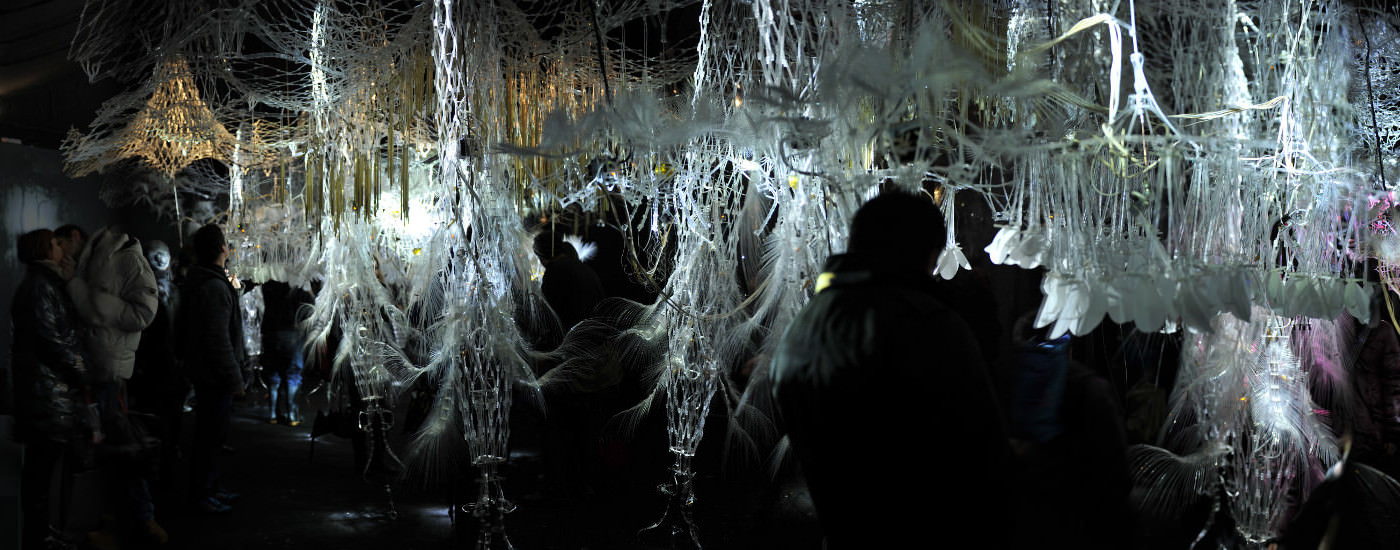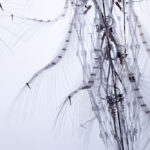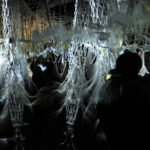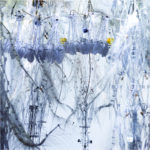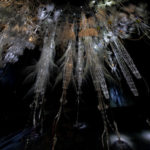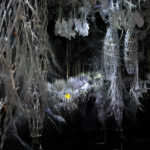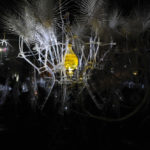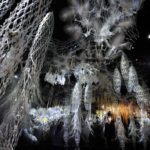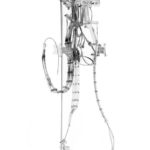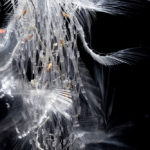Hylozoic Ground
Canadian Pavilion, Venice Biennale
Venice, IT - 2010
Hylozoic Ground by architect and sculptor Philip Beesley (PBAI / University of Waterloo) was selected through a national juried competition to represent Canada at the 2010 Venice Biennale in Architecture.
Hylozoic Ground is a uniquely Canadian experimental architecture that explores qualities of contemporary wilderness. The project transformed the Canada Pavilion into an artificial forest made of an intricate lattice of small transparent acrylic meshwork links, covered with a network of interactive mechanical fronds, filters, and whiskers.
Tens of thousands of lightweight digitally-fabricated components were fitted with microprocessors and proximity sensors that reacted to human presence. This responsive environment functions like a giant lung that breathes in and out around its occupants. Arrays of touch sensors and shape-memory alloy actuators (a type of non-motorized kinetic mechanism) create waves of empathic motion, luring visitors into the eerie shimmering depths of a mythical landscape, a fragile forest of light.
Beesley’s visionary architecture affects people on an emotional and poetic level, linking the animate and the inanimate. The sophisticated technologies used in the work are also being directly translated into architectural envelopes that include manufactured filtering and shading systems.
The work has further applications in a wide range of disciplines including sustainable design, geotextiles, material science, environmental engineering, robotics, psychology, and biotechnology.
